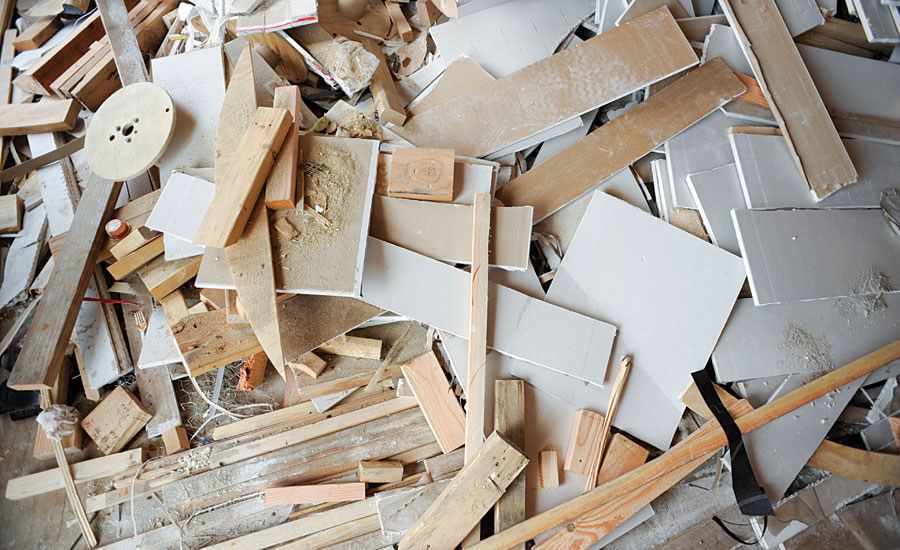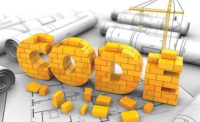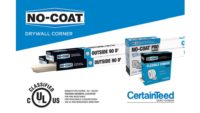The Gypsum Association and its member companies are committed to sustainability, and now, our industry is embracing another opportunity to contribute to a greener world. Construction and demolition (C&D) recycling holds promise for advanced sustainability by contributing to a circular economy. For many advocates of green building, the concept of C&D waste endlessly cycling back and through the supply chain is the new ideal. Almost everyone would rather see something used again rather than “going to waste,” as we say. Moreover, whether you are a major developer, or just a guy, like me, building a house on a property that long served as an unofficial final resting place for old appliances and tires, the price of getting rid of a lot of—ahem—“debris” at the local landfill can seem pretty astounding, if you can find a landfill that will take it at all.
In fact, C&D debris comprises a major waste stream in our country. The U.S. Environmental Protection Agency estimates these materials amount to over 500 million tons annually across all types of construction including new construction, infrastructure and demolition. Many efforts are underway to improve this situation, including the voluntary C&D waste recycling plans that LEED incentivizes and the obligatory C&D waste plans that some localities now require as a part of the permitting process. Yet, even after all the planning and heavy lifting—no pun intended—of separating waste streams and designating end-point recipients, the challenge of ensuring that waste is recycled and reused is only beginning to be met.
Clean Scraps Only
When a product has the potential for closed-loop recycling, i.e. reentering the supply stream for the same or similar product, it is certainly worth facilitating the effort. In the March issue of Walls & Ceilings, readers learned of a gypsum wallboard recycling pilot project spearheaded by the Building Product Ecosystem collaborative in New York. Through the participation of GA member companies, the association and various others, including the Durst Organization, BPE showed that the challenges associated with segregating clean wallboard scrap from other construction wastes were surmountable, demonstrating proof of concept in the recycling of clean scrap.
At this point in time, recycling of clean scrap, which constitutes about 10 to 12 percent of construction waste, is the most plausible means of encouraging closed-loop recycling of gypsum. That’s because wallboard from demolition sites contains nails, screws, finishes such as paint, coatings or adhesives that may contain contaminants such as lead or mold. Moreover until the process of careful deconstruction—rather than all out demolition—becomes the norm, crushing of wallboard and cross-contamination with other construction debris is all too likely. Finally, the business case for the recycling of clean scrap has yet to be established and is key to realizing the triple bottom line of “people, planet and profit.”
In its role as the standards setting body of the gypsum industry, the GA is taking the lead in creating an ASTM standard around the recycling of clean scrap wallboard. The GA supports stakeholder engagement and has long participated in the consensus-based approach associated with standards development. Last fall, with the full support of the Board of Directors, the GA introduced an ASTM work item dedicated to wallboard recycling, WK52269 New Specification for Recycled Content in Gypsum Board. This work item is being developed within Committee C11 on Gypsum and Related Building Materials and Systems under Subcommittee C11.01, Specifications and Test Methods for Gypsum Products.
While the BPE pilot project showed that recycling of clean scrap is possible, the small scale of the project and its adjacency to both a processor and a gypsum manufacturer willing to take the material makes it unique in many ways. Specialty facilities capable of processing scrap wallboard exist; however, they are few and far between. Large scale processing of clean scrap involves equipment capable of removing paper and other facings. Adequate space for storing material before and after processing and a multitude of other complex planning, capital, and quality control issues will need to be resolved before processing of clean scrap can occur at most wallboard plants.
High Standards
Gypsum manufacturers know recycling is possible and that is very meaningful. Wallboard plants already recycle in-house scrap as a raw material. However, the standard is being created before many plants are configured to go full scale. Achieving closed-loop recycling could require accepting many tons of clean scrap from job sites on a daily basis. Thus, the proposed ASTM standard is somewhat aspirational. Recycling on a mass scale is a hurdle that can be overcome. Yet, ASTM manufacturer stakeholders must make some assumptions about how individual facilities may engage in closed-loop recycling on a mass scale.
At the same time, a pretty good understanding of what can be recycled in terms of panel types already exists. Many commonly available commercial panels on the market today can be recycled. Additionally, we understand the basic properties with which the panels need to comply because existing ASTM standards mandate those characteristics. For example, all gypsum panel products would need to be tested for chemical content per ASTM C471, Standard Test Methods for Chemical Analysis of Gypsum and Gypsum Products.
Small scale recycling efforts, such as the BPE pilot, also have robust testing in place to provide a thorough chemical analysis of the gypsum itself. These methods go well beyond C471, and are being considered for inclusion in the standard. While agreement exists around recycling “clean scrap,” defining that term will undoubtable engender debate before a consensus is reached. Anyone familiar with ASTM understands that defining terms is part of standards development. And, as someone who has been involved with ASTM for nearly 15 years in various leadership roles, I’m confident that the consensus approach is the best possible means of achieving a standard for recycled board.
Like any standard, this one will ensure that everyone involved in the value-chain is speaking the same language, understands what materials can and cannot be recycled, and will help ensure that the process of gathering and processing materials for recycling runs smoothly. The mere fact that a recycling standard exists will encourage and facilitate recycling, and help the design and construction community avoid landfilling. Finally, by setting high standards for the materials that can be recycled, the work of the GA, its member companies, and other stakeholders ultimately will assure that only the highest quality wallboard and gypsum panel products are made and installed.
Interested in the development of WK52269? Please visit the ASTM web site (www.astm.org) or contact me at mschmeida@gypsum.org.





Report Abusive Comment